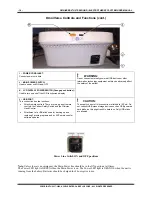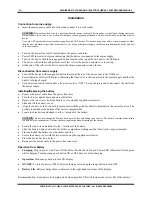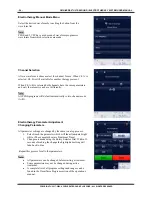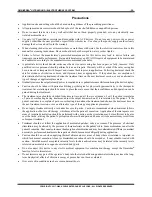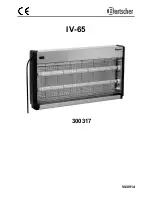
OMNIVERSA
®
ULTRASOUND / ELECTROTHERAPY SYSTEM - 27 -
COPYRIGHT © 2017-2020, ACCELERATED CARE PLUS CORP., ALL RIGHTS RESERVED
ULTRASOUND INDICATIONS & CONTRAINDICATIONS
CAUTION: Federal law restricts this device for sale or use by, or on the order of, a Practitioner
licensed by the laws of the state in which he/she practices to use or order the use of the device.
Please notice that Accelerated Care Plus cannot provide medical advice. If you have specific
medical questions, please contact your healthcare professional.
Indications
The Omnisound is indicated for:
Relieving pain
Decreases joint stiffness and contractures
Reduction of muscle spasm
Increases local circulation
Relief of pain, muscle spasms, and joint contractures that may be associated with: adhesive capsulitis, bursitis
with slight calcification, myositis, soft tissue injuries, shortened tendons due to past injuries and scar tissues
Relief of sub-chronic, chronic pain and joint contractures resulting from: capsular tightness, capsular scaring
Contraindications
Patients with an implanted medical device other than a pacemaker.
Near brain, cervical ganglia, spine, laminectomy sites (can cause spinal-cord heating)
Near the reproductive organs
Total hip arthroplasties with methylmethacrylate or high density polyethylene
Arthroplasties—the effect on bony ingrowth arthroplasties is not well defined; for this reason the most
prudent course is avoiding ultrasonic therapy over these areas
Note:
There is no contraindication to the application of Ultrasound over metal implants.
Over or near bone growth centers until bone growth is complete
Over the thoracic area if the patient is using a cardiac pacemaker
In an area of the body where a malignancy is known to be present
In an area of the body where infectious disease is present
Blood vessels in poor condition should not be treated as the vessel walls may rupture as a result of the
exposure
Patients suffering from cardiac disease should not receive treatment over the cervical ganglia, the stellate
ganglion, the thorax in the region of the heart, or the vagus nerve, as a reflex coronary vasospasm might
result. Only low intensities and short treatment times should be used if these patients are treated in other
areas since the stimulation of practically any afferent autonomic nerve (especially the vagus nerve) in the
body may cause a change in cardiac rate
Patients with thrombophlebitis or other potentially thromboembolic diseases (such as DVT) should not be
treated since a partially disintegrated clot could result in an obstruction of the arterial supply to the brain,
heart or lungs
Over a healing fracture
Over the eye
Over the pregnant uterus
Over ischemic tissues in individuals with vascular disease where the blood supply would be unable to
follow the increase in metabolic demand
Over areas of recent bleeding or hemorrhage
Over areas of active tuberculosis


